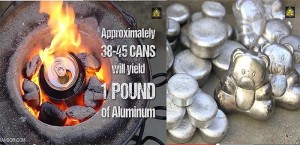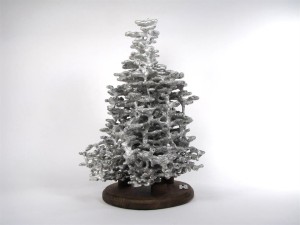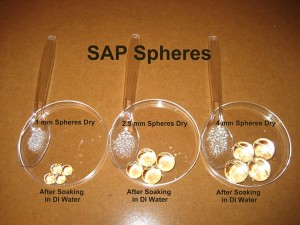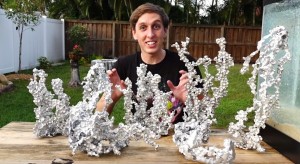When I was in the Flow Visualization class I really wanted to do something with molten aluminum. I couldn’t figure out exactly what to do with it other than casting it (which made it no longer a flow vis type project) so fortunately this type of project was perfectly applicable to the Upcycling project in Aesthetics of Design.
I will be using a few hundred of recycled aluminum cans acquired over the past few months for this exact purpose. My friend made a mini metal foundry last semester that I will be using to melt the aluminum cans.

The king of random
The most popular form of molten aluminum casting is anthill art. The ethics behind invading an anthill with liquid aluminum is a bit shady since it completely destroys the anthill and the ants inside so I decided to take a different approach. For that reason and due to the fact that anthills are extremely difficult to find this time of year in Boulder.

Instead of using an anthill to mold the liquid aluminum I will be using water polymer beads. When left in a tank of water for a few hours, these beads can absorb up to 200 times their weight in water. The liquid aluminum can then be poured into the tank and will flow around the beads and form a very similar design to that of the anthill art.


The backyard scientist
This type of art is most commonly used in household aquariums, in potted plants, or simply as a center piece.

5 Comments. Leave new
[…] Molten Aluminum Art […]
Nice, I’ve always liked the aesthetic of molten metal art. Could your foundry be used to create sculptures with different colored metals for a different aesthetic?
This is so cool and would make for an awesome project. Anthills, casting parts, etc….endless options!
I am still a fan of the prairie dog idea… your gonna need more aluminum for that and maybe an excavator, have you though about agitating the water to give the shape a bit of lifelike movement? Looks like a fun time with molten metal.
This sounds like a lot of fun. If I had a mini metal foundry I can’t imagine how much time I would waste playing with it. Is it possible to control the shapes that form at all, or will it more or less be completely random each time? If you want to aim for a specific shape/design, is it possible to influence the beads at all?